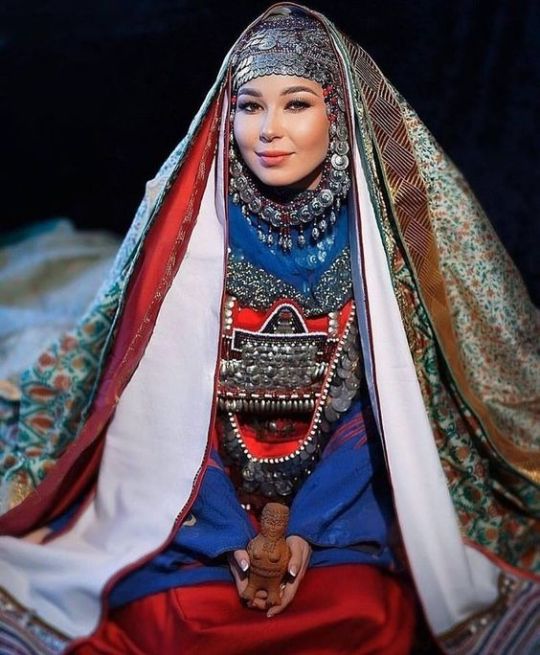#Chuvash culture
Text


Women's shirt. 18th century. Chuvash
from Kunstkamera archive
#indigenous russia#non-russian#indigenous russian#turkic#Chuvashia#Чувашия#Chuvash culture#Культура Чуваши
14 notes
·
View notes
Text
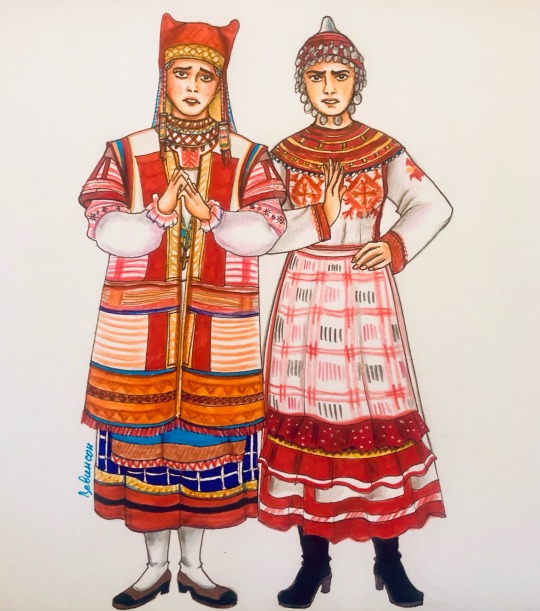
A final part of folk costumes requests! Russian folk costume (Ryazan province) and Chuvash folk costume! 🌺 Nastasya is looking for her husband at the fair, who is having fun somewhere, and her friend, Sarpige, says to her: “Stop messing around with this Vasily!”☀
Четвёртый и финальный реквест по народным костюмам! 🌺Рязанка Настасья ищет на ярмарке своего мужа, который где-то загулялся, а её подруга, чувашка Сарпиге, говорит ей: «Да хватит тебе уже васькаться с этим Василием!»☀


🌺Настасья родом из Михайловского уезда Рязанской губернии.
На голове у неё - рогатая кичка с низками бисера. Рога в народном представлении обладали большой обережной силой, особенно это было важно для женщин, ждущих ребёнка.
Юбка-понёва в синюю клетку и расшитая рубаха - это привычные элементы южнорусского костюма. Особое внимание привлекает верхняя одежда - прекрасный белый шушпан (шушун), богато расшитый и украшенный всевозможными узорами. В "Письме к матери" Сергея Есенина упоминается шушун ( а как вы знаете, поэт был родом из Рязанской губернии и имел характерный говор), так вот, шушпан - это туникообразная одежда, кофта, обычно с рукавами, крой у неё мог быть самый разный, но объединяющим мотивом служил белый цвет и красная отделка. Праздничные шушпаны дополнялись блёстками и обшивались шерстяными нитями.
Важнейшую роль в рязанском костюме играл бисер: в отличие от северянок, крестьянки южных губерний очень любили яркие тона. К ожерелью "ожерелку" крепилась бисерная сетка, сборками ложащаяся вокруг шеи. Круговые (вокруг шеи) и весовые (спадающие на грудь) ожерелья-монисты были очень популярны.


☀️Сарпиге одета в женский чувашский костюм, жаль только, я не знаю, из какой именно местности. Народ, одетый в серебро - так поэтично называли чувашей. Костюм отражал представление древних чувашей о мироздании, на него наносили знаки солнца, звёзд, луны.
Головной убор олицетворял собой небесный купол. Девичья тухья - шапочка из холста, с конусом-навершием из светлого металла. Тухья украшалась рядами бисера и монет, а застегивалась на шее ремешками, тоже с монетами. Они нанизывались определённым образом, чтобы создавать гармоничное звучание.
Рубаха была самой "консервативной" частью костюма, её шили из белого холста, украшали богатой вышивкой. Самым любимым мотивом в вышивке были ромбы (квадраты) и кресты. Узор всегда был довольно сложным, гармоничным, законченным. Спереди повязывался белый с пёстрыми акцентами передник.
В качестве украшений использовались бусы, несчётные цепочки бисера и монет. Нежный перезвон серебра и переливчатые движения света по бисерным рядам придают необычайную и неповторимую выразительность чувашскому костюму.


#folk costume#folklore#russian folk costume#russian culture#chuvash folk costume#chuvash culture#traditional art#traditional costume
42 notes
·
View notes
Text


Otoyomegatari
#turkic#turkish#traditional#türk#nomad#artwork#art#anime and manga#manga#otoyomegatari#turkmen#turkic culture#kazakh#kyrgyz#azerbaijani#chuvash#gagauz#uzbek#bashkir#girl
81 notes
·
View notes
Photo

The Chuvash (Russian: чуваши) are a Turkic people, related to the Oghurs, who are native to a region extending from Central-Western Russia to Siberia.
Many live in Chuvashia and ethnic communities throughout Russia, and continue to speak Chuvashi language, which diverged from other Turkic languages over a thousand years ago.
They have been subjected to much outside influence, not only from Russian and Turkic peoples, but also from neighbouring Finnic tribes, with whom they have been wrongly identified for centuries.
Today, many Chuvash practice a syncretised form of Orthodox Christianity and Shamanism.
Traditional clothing of Chuvash women is complex and varies greatly between regions. A distinctive feature is the rich ornamentation of headdresses and jewellery with decorative silver coins. The most unusual feature is called shulkeme - the breast adornment worn by a young married woman.
The full set of jewellery a Chuvash woman would wear during the ceremony could weigh up to 16kg. Traditionally, the size and weight of the jewellery displayed the wealth of the bride's family and was a fundamental part of her dowry.
The traditional headdress of a married Chuvashi woman is called khushpu.
It is worn over the surpan, a strip of white fabric with embroidery at the ends.
The khushpu pictured here is one of the oldest and rarest in existence, dating back to the 18th Century.
📸 Alexander Kimushin
300 notes
·
View notes
Text

A cute cat wearing a dress of my nationality meow meow ^^
#chuvash#original art#digital art#sketch#national costume#russia#russian culture#cat#meow meow#lets eat huplu
11 notes
·
View notes
Text

Chuvash costume by baltai_costume, model Polina Osipova
90 notes
·
View notes
Text
Chuvash folk song
#indigenous#indigenous russian#culture#indigenous russia#russia#important#colonization#fypシ#fypage#landback#chuvashia#Chuvash#indigenous music#indigenous people#Powerful#beautiful#musica#Music
17 notes
·
View notes
Text
🇺🇦 Чи знали ви, що Донецьк і Донбас як промисловий регіон було засновано валлійським підприємцем?
🏴 Oeddech chi'n gwybod bod Donetsk a Donbas fel rhanbarth diwydiannol wedi'u canfod gan entrepreneur o Gymru?
🏴���� Did you know that Donetsk and Donbas as an industrial region were found by a Welsh entrepreneur?
🇺🇦 Джон Юз (Г'юз) приїхав у Дикий Степ в 1870х та відкрив кільках металургійних мануфактур, навколо яких виросло місто Юзівка, яке зараз ми знаємо як Донецьк.
Металургійний завод був доволі успішним, туди з Уельсу приїздили працювати висококваліфіковані фахівці разом зі своїми родинами. Однак після більшовицької революції завод було націоналізовано, а більшість валлійських робітників повернулися назад до Уельсу.
🏴 John Hughes came to the Wild Steppe in the 1870s and established metal works, later Hughesovka (Yuzovka), now known as Donetsk, was formed around the ironworks.
The ironworks used to be quite successful, highly qualified engineers with their families had been coming from Wales to work here. But after Bolshevik revolution the manufacture was nationalized and many Welsh workers had to come back to Wales.
🏴 Daeth John Hughes i'r Paith Gwyllt yn y 1870au a sefydlwyd gweithfeydd metel, yn ddiweddarach Hughesofka (Iwsofka), a adwaenir bellach fel Donetsk, o amgylch y gwaith haearn.
Roedd y gwaith haearn yn arfer bod yn eithaf llwyddiannus, roedd peirianwyr tra chymwys gyda’u teuluoedd wedi bod yn dod o Gymru i weithio yma. Ond ar ôl chwyldro'r Bolsieficiaid gwladolwyd y gweithgynhyrchu a bu'n rhaid i lawer o weithwyr Cymreig ddychwelyd i Gymru.
Source of photos: Glamorgan archives
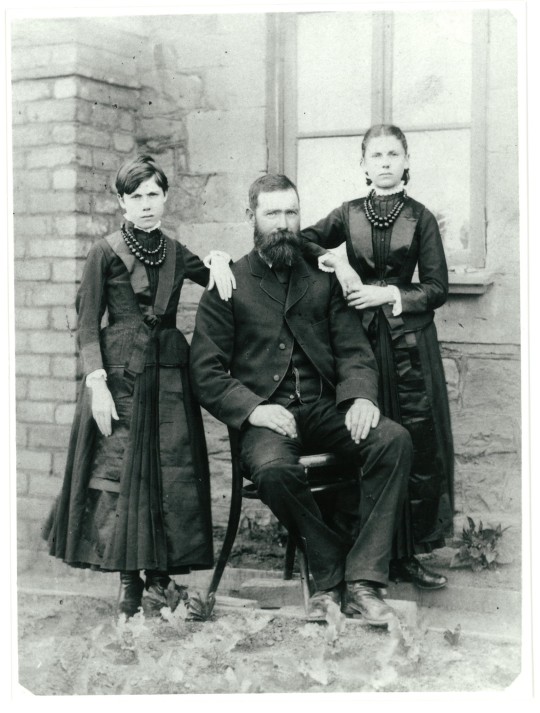





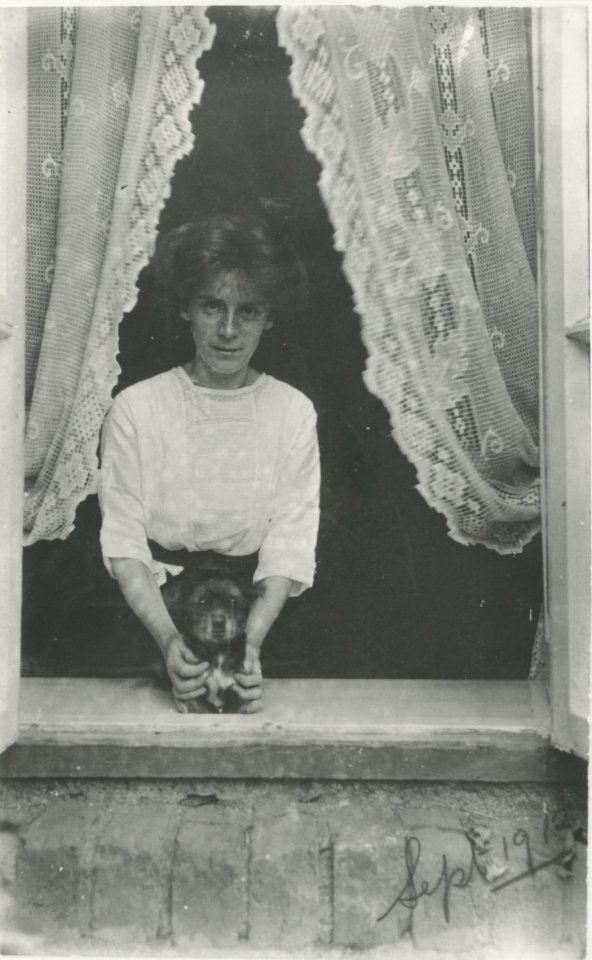



A girl on the last picture - John Hughes'granddaughter wearing supposedly russian peasant costume. It doesn't look like any russian folk costume and I don't know to which culture it actually belongs. Looks like the Chuvash one, but Chuvash in Eastern Ukraine?? I'm confused 😬
155 notes
·
View notes
Text
pros of me learning Chuvash:
I'll understand what my grandmother says
I'll be able to surprise my grandmother
I'll be able to read my great great grandfather's letter in his language (very important for my well being)
I'll be able to translate songs I like to chuvash (I don't why though)
I'll become multilingual
I'll know all three: very gendered language, slightly gendered language and not gendered at all language. I think this will make learning languages easier once I know all the
I'll start writing songs in chuvash and bring our language and culture back (big plans)
4 notes
·
View notes
Text

Dwelling. 1928. Chuvash
from Kunstkamera archive
#indigenous russia#non-russian#indigenous russian#turkic#Chuvashia#Чувашия#Chuvash culture#Культура Чуваши
10 notes
·
View notes
Text
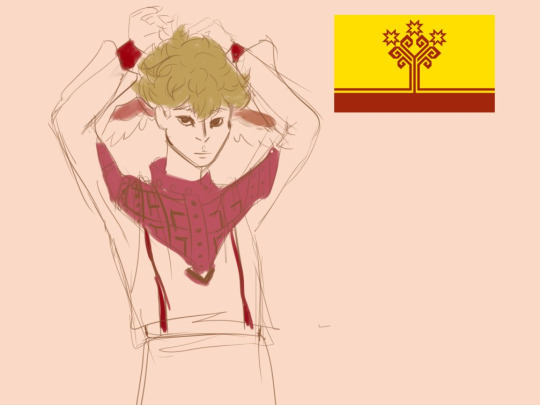
chuvash grian :)
chuvash people are indigenous people of russia speaking a language of a turkic family from an almost extinct branch. chuvash culture is actively being erased by the government. chuvash traditions are vibrant and are worth saving
please make sure you support north asian, indigenous and turkic artists of russia!! vk.com/tuzeek is a chuvash artist i took inspo from!
i’m also ndigenous to russia (tatar) so you can also support me ig......... \\\\
#grian#grianfanart#hermitcraft#hermitblr#hermitcraftfanart#grian fanart#chuvash#chuvashia#turkic#indigenous people of russia#russian minorities
45 notes
·
View notes
Text


Chuvash women
15 notes
·
View notes
Note
Likewise.
Hence why I plan on learning Syriac.
Like I said.
Outside of the Assyrian communities very few people speak it, aside from maybe some Maronites and some Indian Syriac Christians in Kerala.
Plus I figure I may as well learn something what with me being an Irishman what can’t speak Irish.
In addition to Syriac I also have plans to learn Armenian.
And perhaps even Navajo, Basque, Chuvash, Georgian and Adyghe (a Circassian language). Hypothetically…
My dream is to learn a million languages but I really doubt that’ll happen. I’m gonna try to get Hebrew down and after that I think I can get Arabic. Idk what other Semitic languages there are but I can probably get then. Idk what after that if anything.
I should’ve started with Spanish or something but I’m Ashkenazi Jewish so I have more cultural connection to Hebrew. Also considering languages from my European heritage (German, Russian, Ukrainian, Polish, Yiddish) but idk.
I also have a friend who’s Armenian, which is neat. We’ve only talked about that once tho and I probably don’t want to push her on that.
6 notes
·
View notes
Text
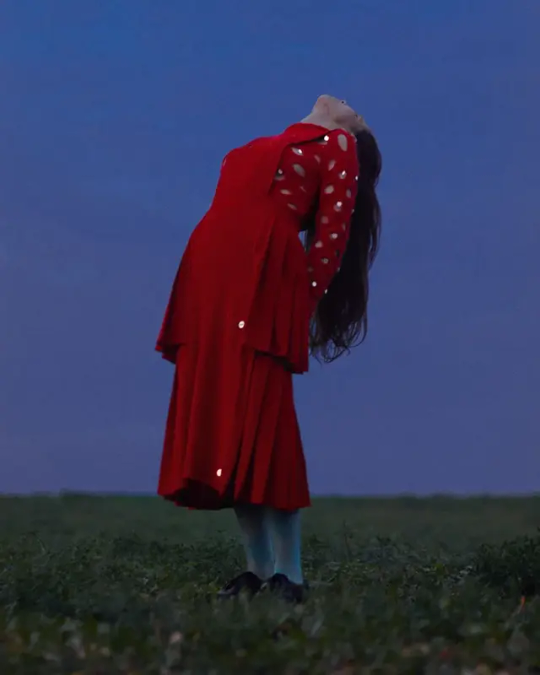
Art group and fashion brand HӖRACHA was created in St. Petersburg by Isenkkel and Vella Akhtimer. The group's field of study are contemporary art and fashion design. The area of interest include the Chuvash traditional culture, technology, hybrid art. The artists explore the theme of self-identification in the global world and other existential problems. They work in such mediums as clothing, installation, video and sound.
"Hĕracha" means "a girl" in chuvash language. In their work, designers are inspired by the Chuvash culture: costume, traditions, fairy tales and myths; they deconstruct it and place the newly assembled elements into a romantic futuristic reality.
HӖRACHA clothers and objects are made in Saint-Petersburg by the designers themselves, embroidery is also produced in the studio in Chivashia.
2 notes
·
View notes
Text
Back that day. I remember the day I met new people in the hours of our common friend. The question that touched me was “What is your origin”? I don't really like this question because I have so many roots in my family that it becomes difficult to find the right one, the one that could help me choose some kind of label or tag.

My father, for instance, is a Tatar, but it is not as easy as it seems to be. My grandfather is half Crimean-Tatar half Kazan-Tatar with a little bit of Bouryats in his genealogy. My grandmother is Chuvash, Jewish, Tatar and Crimean Tatar. So my father is mixed. However, he always considered himself as being Tatar only.
He drinks lots and lots of tea, he knows how to cook, he is tall and his grey eyes are always full of courage.
As for my mother, it is no less complicated than with my father. First of all, her mother is half-Estonian, half-French with Breton origins. As for her father, he is Polish, Estonian too, a little bit Bielorus, and something else that we do not know because of the complicated history of my family members that I try to preserve and write down each and every tiny part of information.
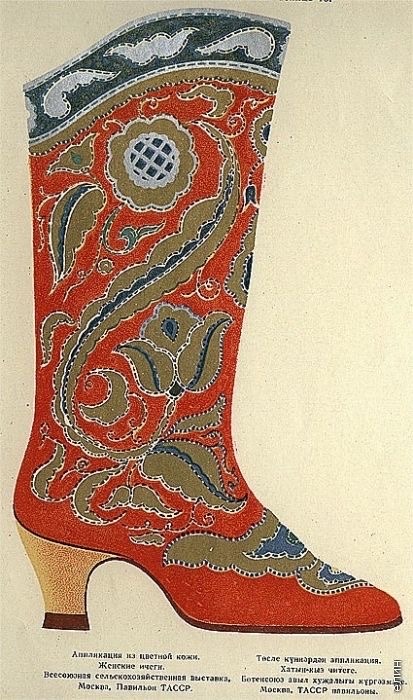
As for me, the question of cultural identity used to be vital for me, because I had so many variants to choose from. One day, my friend told me that maybe I should try looking at the language that I speak. Hm. I've tried. And it is also not as easy as it could be. You see, I speak French every day, I also write in English, I can read and talk in Russian and I've started to learn Tatar to not forget the culture of my father. I live and I always lived in such a mix of different cultures that I've decided not to choose. I want to preserve everything that my family gave me.

So, why don't I like this very question? Because it takes me a while to explain who I am. But the most important thing is that I am a person. Don’t let anyone destroy your interior calm. You are precious, you are who you are.
I think that I would like write a little bit more about Tatars, what do you think? Let me know
#writing#aesthetics#lgbt#auteur#ecrivain#writer#writings#writer stuff#gay#twitter#cultural identity#tatar#tatar language#childhood#memories#short story
2 notes
·
View notes
